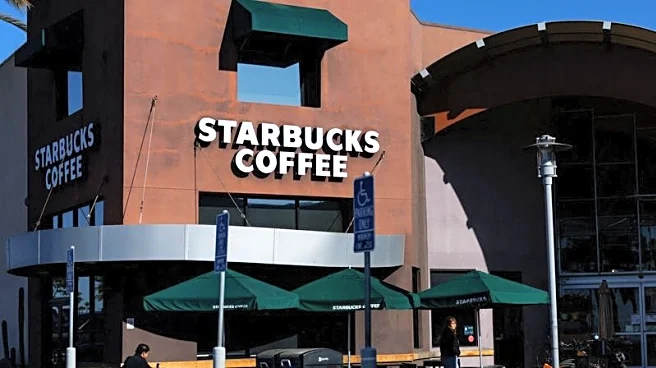What's Happening?
Starbucks is laying off around 900 non-retail employees and closing some U.S. and Canadian stores as part of a turnaround strategy. The company plans to notify affected employees early Friday and close an undetermined number of stores in North America. CEO Brian Niccol stated that many locations are not meeting financial performance targets or customer expectations. Starbucks expects to end its fiscal year with 18,300 stores, down from 18,424 last year. The restructuring will cost $1 billion, including expenses for employee separation benefits and store closures.
Why It's Important?
The decision to close stores and lay off employees is significant as it reflects Starbucks' efforts to address financial challenges and improve its business model. The closures and layoffs could impact local economies and communities where Starbucks stores serve as social hubs. The restructuring aims to create a more resilient Starbucks, potentially affecting the company's market position and shareholder confidence. Employees may face uncertainty, although some may be offered transfers to nearby locations. The move underscores the broader trend of companies reevaluating their operations in response to changing market conditions.
What's Next?
Starbucks plans to continue growing its number of coffeehouses and refurbish over 1,000 existing locations in the next fiscal year. The company aims to create a 'warm and welcoming' atmosphere in its stores, which may involve redesigning store interiors. Starbucks Workers United, representing 12,000 baristas, intends to bargain with the company to ensure affected employees are reassigned according to their preferences. The restructuring could lead to further negotiations between the union and Starbucks, particularly concerning employee rights and store operations.
Beyond the Headlines
The closures raise questions about the role of unionized stores in Starbucks' decision-making process. While the company claims union representation wasn't a factor, the union has expressed concerns about the lack of input from baristas. This situation highlights the ongoing labor relations challenges within the company. Additionally, the restructuring reflects broader industry trends where companies are increasingly focusing on efficiency and customer experience to remain competitive.












